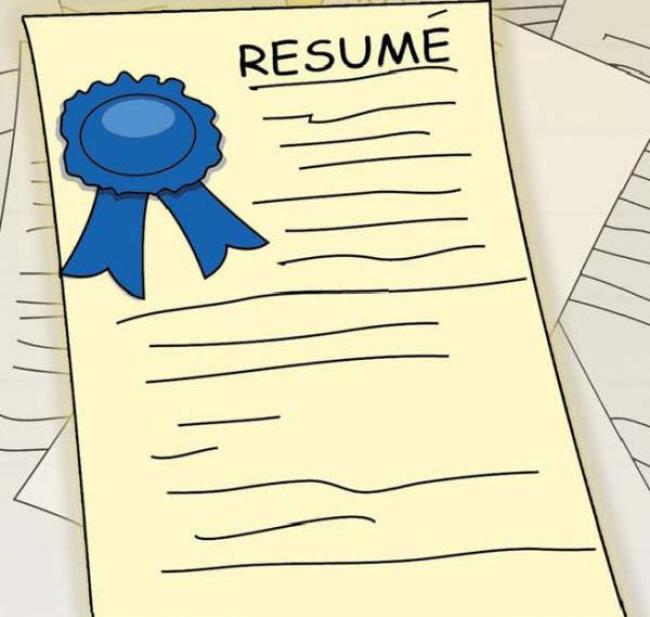In creative professions, your resume is more than just a list of jobs—it’s an introduction to your aesthetic, style, and attention to detail. Whether you are a designer, illustrator, writer, or multimedia artist, your resume must strike a balance between visual appeal and professional clarity. The challenge lies in presenting creativity without compromising readability or ATS (Applicant Tracking System) compatibility.
Creative resumes are unique: they showcase both skills and personality. While traditional resumes prioritize structure and simplicity, creative resumes must demonstrate design sensibility, attention to detail, and the ability to communicate visually. The document itself becomes a reflection of the candidate’s professional identity.
Understanding the Purpose of a Creative Resume
A resume for a creative profession serves three key purposes:
-
Demonstrate your professional experience – Highlight your achievements, roles, and contributions in a structured way.
-
Showcase your creative sensibility – The format, typography, color, and layout communicate your aesthetic taste.
-
Engage the reader visually and intellectually – Hiring managers should understand your qualifications at a glance, while also being impressed by your design choices.
Striking this balance requires strategic design choices. Overly decorative resumes can distract from the content, while overly plain resumes may fail to communicate creativity. Successful creative resumes integrate form and function, ensuring that visual elements enhance rather than overshadow the message.
Design Considerations for Creative Resumes
When designing a resume for a creative profession, several key considerations are crucial:
Layout and Structure
Even in a creative resume, the layout should be intuitive and easy to navigate. Use clear headings for sections such as Experience, Education, Skills, and Portfolio. White space is critical—it helps prevent visual overload and ensures that important information is easy to locate.
Column layouts can be effective: one column for text and another for visuals, icons, or side notes. However, excessive experimentation with asymmetry or unusual grids can reduce readability. The goal is to make your resume visually distinct without confusing the reader.
Typography
Fonts communicate style. Sans-serif fonts like Helvetica or Futura convey modernity and simplicity, while serif fonts such as Garamond or Times New Roman suggest tradition and elegance. Avoid using too many fonts—typically one or two complementary fonts are sufficient.
Typography hierarchy matters. Headings should be clearly distinguishable from body text. Using subtle weight variations or size differences helps guide the reader’s eye naturally through the content.
Color Usage
Color can enhance a resume, but moderation is key. Highlight headings, section dividers, or key achievements with color, while keeping the majority of the text dark and legible. Bright, overwhelming colors may distract from content and may not translate well in black-and-white printing or ATS scans.
Consider branding your resume with a consistent color palette that reflects your personal style or aligns with the type of roles you are pursuing.
Visual Elements
Icons, small illustrations, charts, or infographics can help communicate skills, software proficiency, or achievements. For example, using a skill bar to show proficiency in Adobe Photoshop or Illustrator can be visually engaging.
However, visuals should support, not replace, important textual content. The hiring manager should be able to understand your experience without interpreting complicated graphics.
Tailoring Content for Creative Industries
Content remains critical. A visually appealing resume cannot compensate for unclear or poorly structured information. Focus on presenting relevant experience, skills, and achievements:
-
Highlight relevant projects – Include client work, personal projects, or exhibitions.
-
Show measurable outcomes – Whenever possible, quantify results (e.g., “Increased social media engagement by 30% through custom graphics”).
-
Showcase technical skills – List software, tools, or techniques relevant to the position.
-
Include a portfolio link – Ensure your online portfolio is easily accessible and reflects the style demonstrated in your resume.
Examples of Effective Resume Sections
| Section | Best Practices | Visual Enhancement Ideas |
|---|---|---|
| Header | Name, title, contact info | Minimalistic icons for email, website, social media |
| Experience | Roles, company, dates, achievements | Use bullet points with subtle graphic markers |
| Skills | Technical and creative skills | Bars or small infographics for proficiency |
| Education | Degrees, certifications | Include small logos of institutions for a modern touch |
| Portfolio | Link to work samples | QR code or clickable text with branded style |
| Awards & Recognition | Competitions, exhibitions, publications | Small medal icons or badges |
Balancing ATS Compatibility with Creativity
Many creative resumes are designed to impress visually but may be rejected by ATS systems that cannot interpret graphics or complex layouts. To avoid this, maintain a hybrid approach:
-
Include a plain-text version for ATS submissions.
-
Use standard headings like Experience, Education, Skills to ensure compatibility.
-
Avoid embedding critical information in images.
-
Keep design elements enhancing, not replacing textual content.
This strategy ensures your resume reaches the human reviewer while still showcasing your creativity when possible.
Common Mistakes to Avoid
-
Overloading with visuals – Too many graphics can obscure essential information.
-
Using decorative fonts – Hard-to-read fonts may frustrate the reader.
-
Neglecting ATS – Failing to provide a compatible version can lead to automatic rejection.
-
Exaggerating content – Visual flair cannot compensate for inaccuracies or vague descriptions.
-
Inconsistent branding – Mismatched colors, fonts, or styles weaken the impression of professionalism.
Personal Branding Through the Resume
Your creative resume should reflect your personal brand. Consider the following elements:
-
Consistent color palette and typography across resume and portfolio.
-
Logo or monogram for personal branding (especially for freelance designers).
-
Tone of writing that mirrors your style—formal for corporate design, playful for animation or game design.
Personal branding helps recruiters immediately associate your resume with your unique creative identity.
Digital Considerations
In addition to print versions, digital resumes are increasingly important. Consider:
-
Interactive PDFs with clickable portfolio links.
-
Website-based resumes for multimedia professionals.
-
Email-friendly formats ensuring readability on different devices.
Digital formats allow integration of multimedia elements, such as videos or animations, particularly useful for motion designers, illustrators, and digital artists.
Case Study: Creative Resume in Action
Consider a mid-level graphic designer applying to a branding agency. Their resume might include:
-
Header: Name, “Graphic Designer & Visual Storyteller,” email, LinkedIn, personal website.
-
Experience: Roles at design studios with quantified achievements (“Redesigned brand identity for X company, increasing engagement by 25%”).
-
Skills: Adobe Creative Suite, Figma, typography, illustration. Visual skill bars show proficiency.
-
Portfolio: Link to curated projects with consistent style.
-
Awards: Mentioned with small icons.
The combination of structured content, clean visuals, and a consistent color palette makes this resume both ATS-friendly and aesthetically impressive.
Conclusion: The Art and Science of Creative Resumes
A creative resume is a delicate balance between visual storytelling and professional clarity. It should communicate qualifications, skills, and achievements while reflecting the candidate’s design sensibility.
Key takeaways for creating an effective creative resume:
-
Use clean layouts, clear headings, and white space.
-
Apply consistent typography and color palettes aligned with personal brand.
-
Enhance content with subtle visuals, charts, or icons without compromising readability.
-
Maintain ATS compatibility by providing plain-text versions and clear headings.
-
Include portfolio links and measurable outcomes to demonstrate impact.
In creative professions, a resume is more than a document—it is your first design project, a tangible representation of your aesthetic judgment, attention to detail, and professional identity. Balancing visuals and professionalism ensures that your resume not only catches the eye but also communicates your qualifications effectively.

